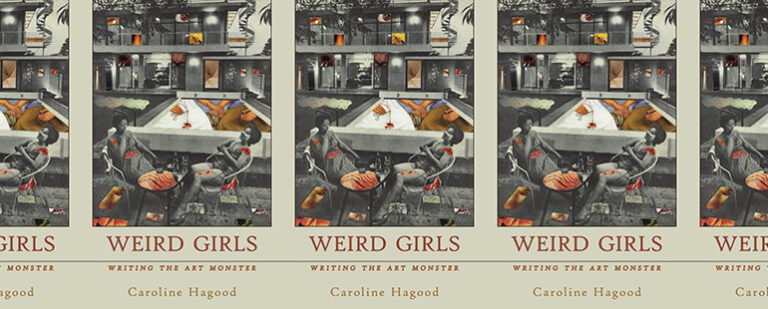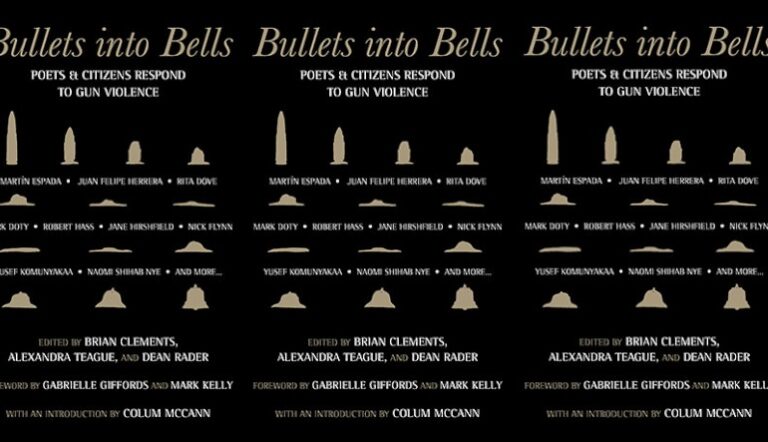The Liminality of Life and Death in Seán Ó Ríordáin’s Poetry

Poetry as life and death—may I term this struggle as survival? Seán Ó Ríordáin, the Irish poet whose oeuvre elucidates this limbo, looks no further than to the interaction of light with dark to explain this compulsion for the letter as both cure and curse.
In his poem “Claustrophobia,” from his second collection Brosna (1964), translated by Francis O’Hare, night takes on a physical presence in addition to psychic space, threatening to encroach on and enter the speaker’s very body: “the night will leap up / and into my lung.” This dread of night’s invasion, the danger that he will become “living night, / darkness defined” requires a resistance of sorts, and Ó Ríordáin ascertains that it must come from within. The speaker resolves: “but if my candle holds out / through this one night, / until the day comes / I’ll be a republic of light.” Ó Ríordáin indents these last four lines as a way to provide a visual and verbal breathing space and separation. The blank space that introduces each line enacts a distancing effect that corresponds to a shielding of the speaker from the dark. The hope in these lines to be a “republic of light,” however, depends on a single candle on a single night, signaling the metaphorical difference in scale between a glimmer of hope and the doom of gloom.
This all-consuming nature of night recurs in “Light,” from Línte Limbó (1971), translated by Theo Dorgan, in which Ó Ríordáin describes the voraciousness of dark’s disappearance of the external environment: “the dark swallowed every shape,” he writes. Only when the speaker turns on a lamp can he see the furniture in the room, and with this action comes the recognition of a power, for the control of light grants agency, even a divinity, to the speaker. But despite this capacity, the speaker decides to darken his world once more, so that he “quench[es] / [his] two hands and what there [is] / to be seen of existence.” This poem ends with this image of darkness—the speaker enacts a sensory deprivation of himself, for the hands which could formerly (even if inadequately) assess the world through touch now disappear, and, of course, his vision vanishes. He possesses no access to the world, but more importantly, the main erasure is of his body, his own self. Indeed, the following and final stanza summons the metaphysics of death. When the light of life no longer shines, he says, “I will leave behind me the world in its form, / but I will leave it in darkness.” This forecast of the future inverts the inner and outer worlds, for Ó Ríordáin recasts the absence of sight which will symptomize death as instead a darkness of the surrounds. Although the shapes remain, it is as if they also no longer exist. In this image (or rather, lack thereof), Ó Ríordáin posits an interpretation of death that foregrounds the spirit and consciousness, instead of the body, as bearers of life.
Darkness, it becomes clear, signals the hopeless world that Ó Ríordáin must resist and exorcise to protect the self. But surprisingly, it is death that enables this superiorization of the self, for he views death as a return to or unification of the self. In “The Footprints” (Brosna 1964), he asserts the multitudinous nature of the speaker, who says, “there’s many a me in myself, / one lost with every word uttered / rising with every breath.” Each breath, then, inaugurates a new formation of selfhood. There exists a sense of triumph in this Whitmanian multiplicity of self, but also present is the suggestion of fracture. The poem is a recounting of how the speaker unknowingly accompanies someone on a journey, “two of us on one road.” This companion, so the speaker reveals, is his previous, irretrievable self. The mention of the two people versus the singular road emphasizes the bifurcation (even multifurcation) of the speaker’s being, but the speaker fails to realize this other presence until he sees footprints in the mud. “A host of selves scribbled these verses, / one born each time I breathe,” writes Ó Ríordáin, or the many Ó Ríordáins of this poem. The alternating indentation of the lines mimics the introduction and recession of these new selves, the inhale and exhale of breath. An argument for the multitudinous nature of the self occurs in another poem, “Me,” from Línte Limbó (1971), translated by Frank Sewell, but here the speaker seems to lament his fragmentation and finds that only death can grant true unification: “But I’ll return to him, / that is, to me, / on our deathbed.” Just as in “The Footprints,” where the speaker cannot see his former self and can notice only the negative space of the footprints, the speaker in this poem struggles to locate his past life. He asks, “But where can I find him— / me, that is?” The translator’s placement of the dash and the subsequent clarification of the “him” as the “me” suggests this partition and distance, almost as if the speaker must remind and correct himself. Ó Ríordáin grapples with the desire for personal discovery but resigns himself to the fact that only death will allow for this fusion.
Still, if Ó Ríordáin must wait until the end of his life for the great reunion, poetry serves as its closest approximation. The continuity of “The Footprints,” despite the rapid production and repression of selves, indicates what amounts to a collaboration of sorts in that a coherent verse arises from the series of voices. In “Me,” too, Ó Ríordáin appears to directly address his art: “There’s no inspiration in the world for me / but me.” Here Ó Ríordáin presents poetry as a potential site for the focalization of the self: even if death provides the ultimate self-knowledge, poetry still instigates a familiarization of the self to oneself. After all, as the speaker in the “The Footprints” indicates, while each breath gives birth to a new incarnation of the self, it also results in the death of each former being.
For Ó Ríordáin, this compulsion for self-reflection drives his living, and short of death, poetry is its best conduit. In “Limbo Lines,” from Línte Limbó (1971), translated by Celia de Fréine, Ó Ríordáin imbues the poem with writerly doubt: “how do I know that they / weren’t the better words, / for putting my self / into what had to be said.” Ó Ríordáin’s concern with the exposure of the self to himself and onto the page manifests into constant suspicion that what he projects and reveals does not achieve accuracy. Indeed, the last twelve of the poem’s twenty lines form questions, in a narrative act of subsuming with uncertainty. “Which me or alter-me / would I see in the mirror,” wonders the speaker. Despite this fear that his poetry is a false projection of himself, he also realizes that words carry significance. In fact, it is this questioning that allows for the clarity and precision to which he aspires. In “A Prayer,” from Brosna (1964), translated by Colm Breathnach, the speaker asserts, “to be alive is to inquire.” The questions that populate Ó Ríordáin’s poems and symptomize his inquiry thus reveal an insatiable appetite for understanding. Poetry, then, serves to both fill and fuel his curiosity. But through this tension arises another paradox, that of Ó Ríordáin as a person whose poetry mimics his vision of death but also becomes a mode of and reason for living.
I thus read Ó Ríordáin’s poetry as existing within the liminality of life and death, for in his universe, it both administers and takes life. For example, in “A Poem,” from Eireaball Spideoige (1952), translated by Colm Breathnach, the speaker compares verse to the womb of a pregnant woman, and of the words that accumulate into verse, Ó Ríordáin writes, “milking those words is not unlike / draining those teats dry.” It is, in these images, a form of sustenance. But the poem also introduces its contradiction in the consumption of milk, the desertification of those teats.
“Syllabication,” from Eireaball Spideoige (1952), translated by Séan Ó Coileáin, Seán Ó Mórdha, Frank Sewell, and Robert Welch, continues this outlook: a hospital nurse syllabifies the pulses of her patients, “jotting down the rhythm / that beat[s] between her fingers, / then [leaves] the pulses beating.” The heartbeats indicate the presence and propulsion of life in her patients, and even when she leaves, the rhythm refuses to relent. Ó Ríordáin transforms these beats into a form of prayer that courses through the “abbey of the flesh.” In terms of form, the poem is one fluid sentence, the period mark arriving to punctuate the last line. But death looms all the same: the setting is a hospital, the people its patients. The image of the hearts that “beat between her [the nurse’s] fingers,” as if she could crush them if she intended harm, is a scene of fragility and frailty. Ó Ríordáin thus analogizes poetry to the transcription of life into syllables and words, but adjacent to it he always finds death.
After all, experience teaches him that to live is to suffer. In “The Dark,” from Eireaball Spideoige (1952), translated by Peter Sirr, the speaker rejects any self-pity, but still reflects on the wreckage of his life and others’: “every light that was lit was quenched / by unbelievable disaster that blew / like this wind screeching in my ears,” he writes. In Ó Ríordáin’s universe, misfortune possesses an omnipresence and exists as forces of nature unstoppable by the human will. This same wind returns in Tar Éis Mo Bháis, in “Words on the Wind” (1978), translated by Paddy Bushe. Here Ó Ríordáin interrogates the robustness of language. He implores the reader to “see how the words bend / under the weight of the wind, / how they are snatched away in a gust.” The words emanating from the mouth of the speaker buckle from the strength of the gales, in what is a metaphor for his poetry against the harm of living. The wind consumes the words such that the words become the wind in a cycle that results in echoes and plural voices. Much like the multiple selves, these artifacts of a shattered production of language metastasize into an inescapable torment. As O’Riordian writes, in this scheme comes “word after word / to the end without end / without relief or respite.” Perhaps, then, Ó Ríordáin does not expect or seek complete refuge in words. Rather, poetry becomes a wrestle that brings him closer to doubt and death, but this very fact reveals a value to life.
Ó Ríordáin emphasizes the importance of the self in relation to this value, even dignity, of life. “Listen to the River Speak” (Eireaball Spideoige 1952) is a portrayal of a river as a symbol of truth because it rushes forth with ‘no false note / in all that flow of talk. Importantly, it speaks and answers to no one but itself, which the speaker admires and desires to emulate. I transpose the last stanza here:
I will speak to myself
as the river spoke, undeceiving,
when it rose a poem to the mountains
in its own weight of water,
spurning the false music
with its own clear voice.
Ó Ríordáin aspires for a transcendental truth that may lift itself of its own accord to the heights of mountains and finds its possibility in poetry. This auto-elevated form represents a resurrection of the self from the lows of self-deception and doubt. The river’s clarity allows for its distillation into truth, the musicality of its movement permitting this translation of pessimism into a pure tune of honesty. For Ó Ríordáin, the compulsion for veracity propels him forward into life (and death), and above into a higher form of living and vivacity.
This argument for the benefit of poetry appears also in “Hell” (Eireaball Spideoige 1952), where the speaker says, “my soul’s imprisoned / in the gloom of venial sin.” He attempts to find thought “in the light all around,” but his soul experiences an entrapment. What the speaker needs to rectify this confinement is a light from within, and poetry provides this illumination, a near-religious salvation.
Death’s nearing presence, after all, necessitates some form of redemption in anticipation of it. Ó Ríordáin writes “The Noose Nearest the Neck” in Tar Éis Mo Bháis (1978), translated by Denise Blake, as a haunting treatment of death’s approach: the threat of strangulation looms over his life, provided in the visualization of the liminal space that he occupies in the noose. The speaker views, as audience, his own mortality: “I see the person in front of me / his suffering, his death: // so easy for me to ignore him.” He could ignore him, but he does not. Poetry too performs this very role: loosening and tightening its stranglehold on Ó Ríordáin, forcing him to confront his selves. And while such tension inevitably suspends Ó Ríordáin in a limbo, he discovers a space within that amounts to an irrefutable argument to search and to live and to write.
This piece was originally published on June 24, 2020.


